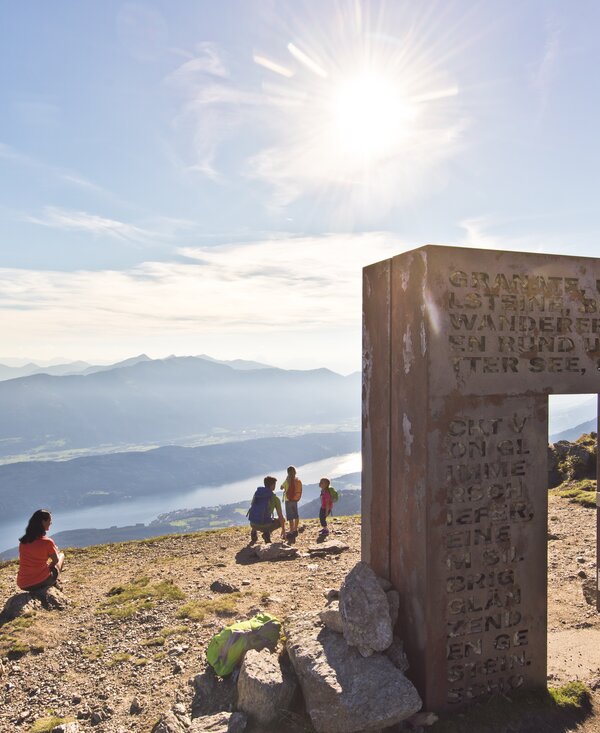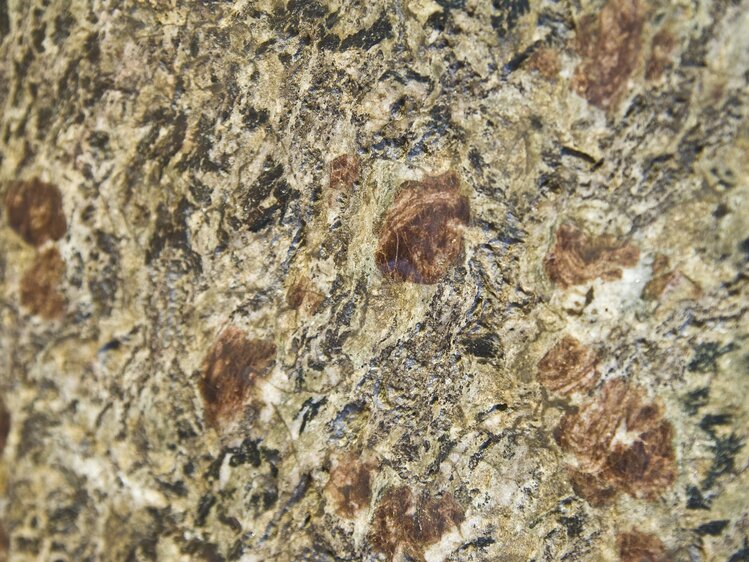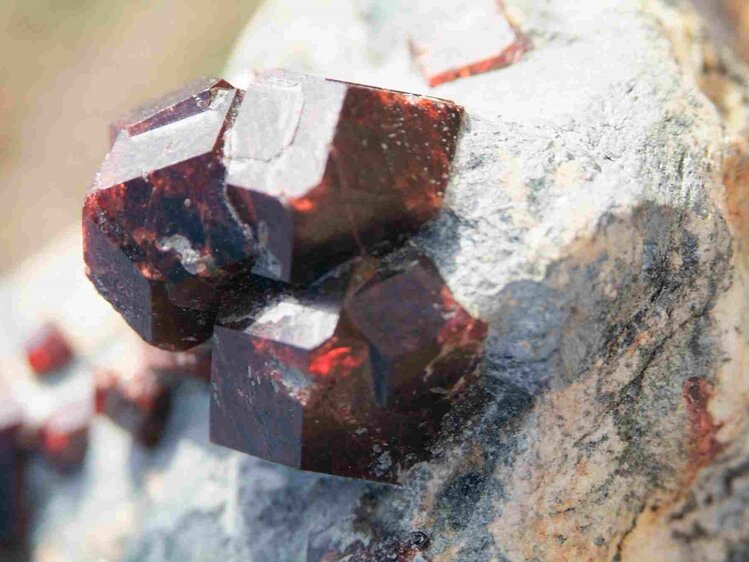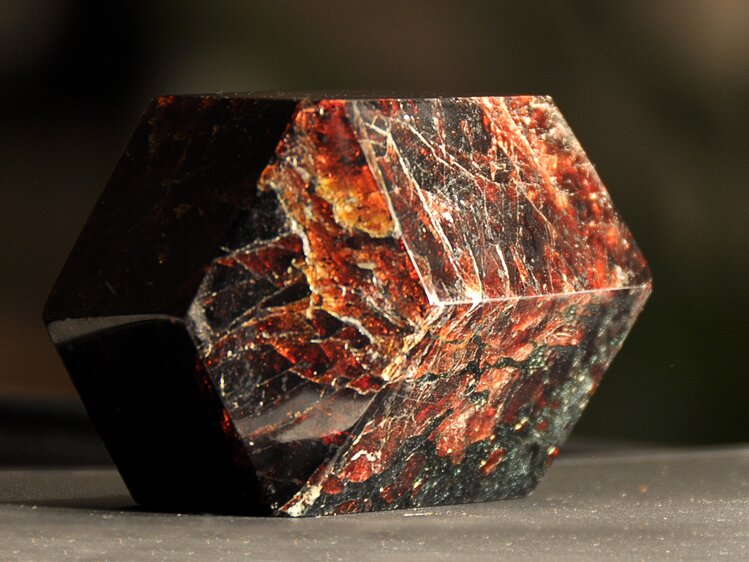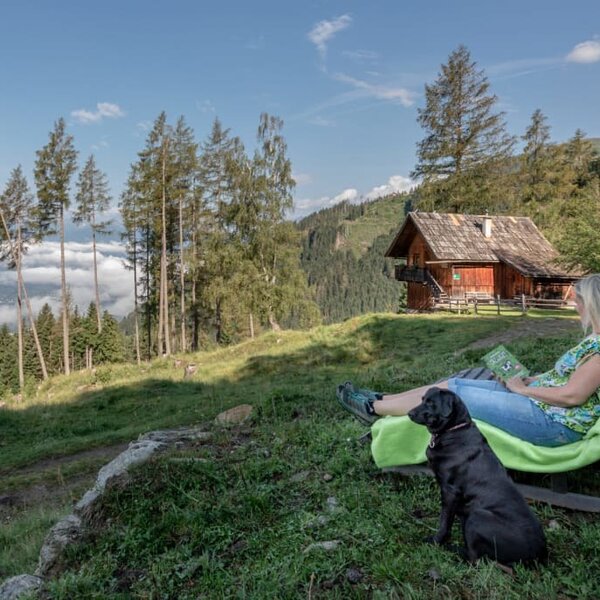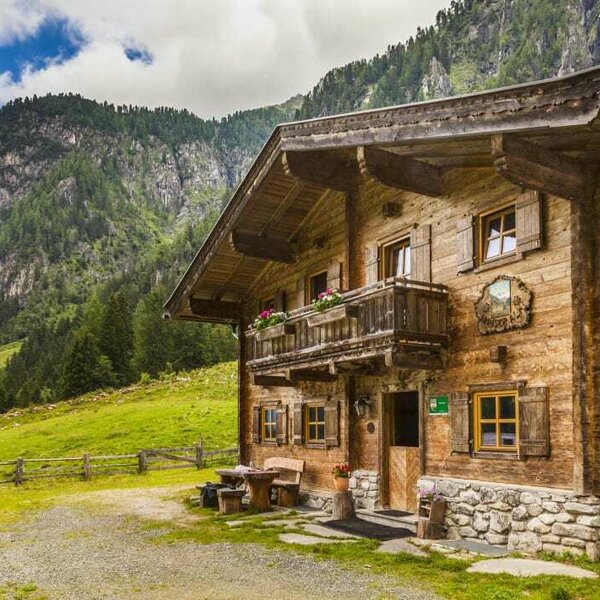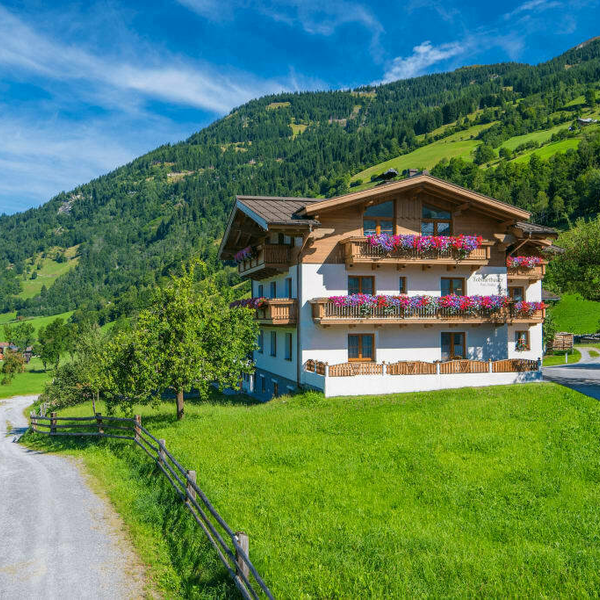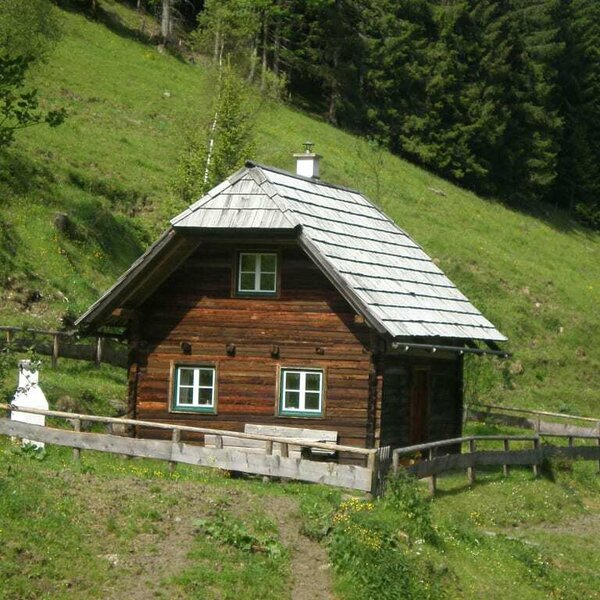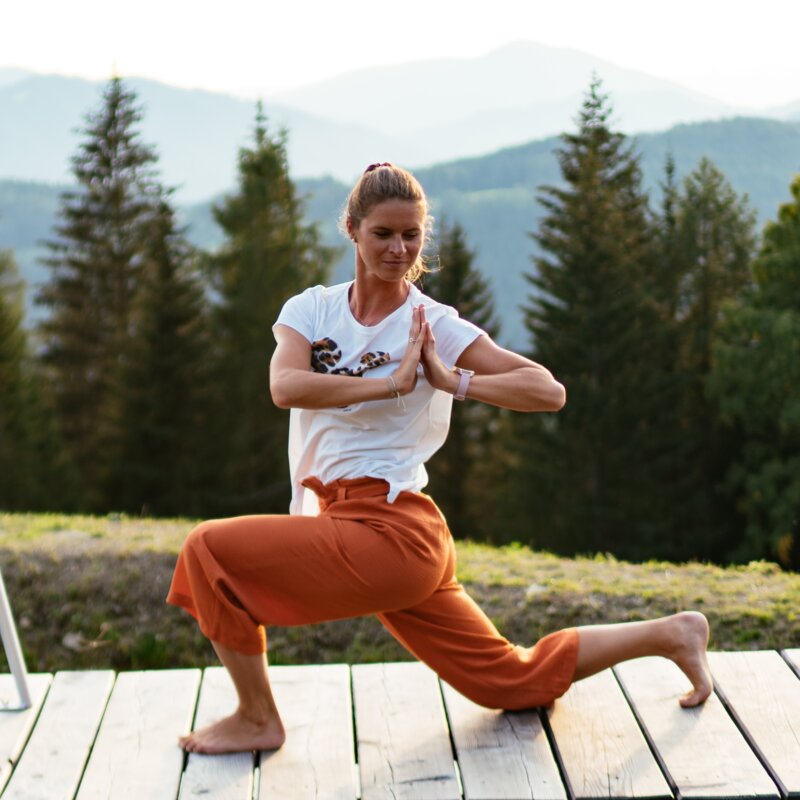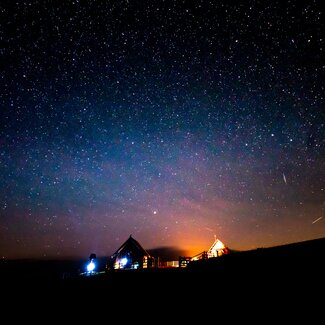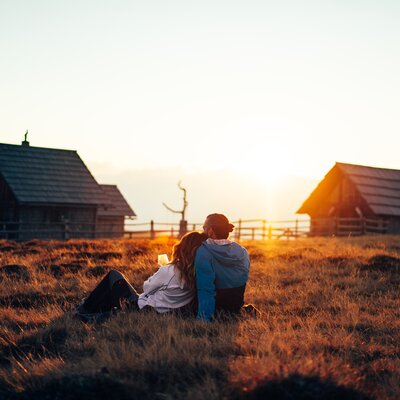Find Rocky Treasures in Austria’s Mountains
Our Alps are millions of years old. After the collision of the African and Eurasian tectonic plates, enormous endogenic forces have folded and uplifted the rocky layers. A new mountain range emerged - the Alps. All kinds of crystals, minerals and fossils have suddenly been relocated, from the sea floor to the high altitudes of the mountains. And up to this day, they are hidden in the depths of the Alps, a mountain chain that is located in Austria to a great extent.
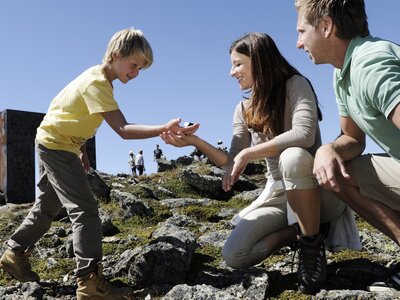
An Expert Eye for Sparkling Details
“You can rarely find crystals along much-frequented paths. But off the beaten track, in untouched areas, you might spot them. Those who often spend time in the mountains can train their eyes and detect sparkling details between grey rocks”, Norbert Kranzelbinder encourages people to set out hunting for gems. He’s arguably Austria’s most famous expert on minerals. On the pass Turracher Höhe in Carinthia’s Nockberge mountains, an area rich in minerals, he has designed a show room focusing on crystals and other curious objects. In addition, he runs several mineral shops and he’s currently planning a museum in Vienna. This way, he would like to transfer the world of sparkling gemstones to Austria’s grey capital city.
For the first gem hunting tour, Kranzelbinder recommends joining the experts. They know where to go in order to find those small treasures. Plus, they are familiar with the rules and regulations. After all, the collection of minerals from nature is generally allowed. However, it’s not like you can set out with your mattock and shovel, shattering all kinds of rocks and digging like there’s no tomorrow. You may get into trouble with the authorities or the land owner. Better be on the safe side and join a guided tour with experts.
Kids Love Collecting Things
“The beautiful thing about it: You get more aware of the beauty of nature. Gem hunting is especially exciting and informative for kids. Kids love collecting things”, the expert knows, drawing from his own experience.
Which mountainous regions in Austria are rich in interesting minerals? Basically, you can find them anywhere in the mountains and on the alpine pastures. According to Kranzelbinder, a hike in Carinthia’s Nockberge mountains, around Lake Weißensee, in the Hohe Tauern range and in the Habachtal valley (Salzburg) can be especially rewarding. As you’re out and about exploring Austria’s mountains, you may be rewarded with quartz crystals, emerald, granite, marble, amethyst, dolomite, greenschist, gneiss and garnet.
“The Nockberge mountains are full of garnets”, Kranzelbinder tells us. Those glittering gems of a dark red colour look rather plain in nature. Most often, they occur embedded in rocks looking like pomegranate seeds. On the rocky surfaces and alpine pastures near Radenthein, in the direction of Kaning, they can be found in abundance. Alternatively, you can marvel at them in the museum “Granatium”. Radenthein is Austria’s “garnet city” for a good reason.
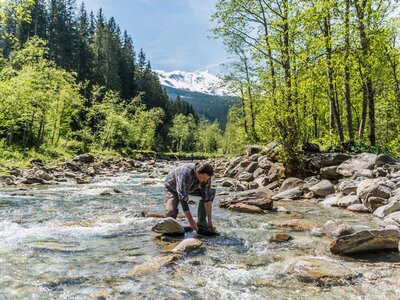
The Emerald Valley
A gemstone renowned for its “green fire” can be found in the Habachtal valley. The romantic side valley in Salzburg’s Oberpinzgau region, right in the Hohe Tauern National Park, is also called “Emerald Valley”. Join a guided walk on the “emerald path”. Whilst gem hunting with professional guidance, you can dig for these marvellous, sparkling green gems. In most cases, the “green fire” is hiding between the rocks and pebbles of a mountain stream. You can get the necessary equipment on site. Don’t miss out on the museum in Bramberg where you can find out all kinds of interesting details about emeralds.
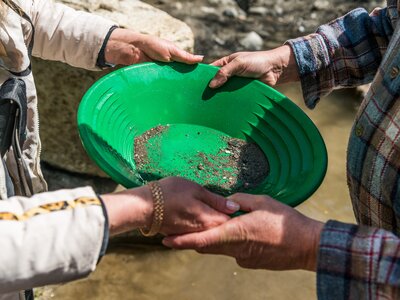
Pan for Gold Like an Old Gold Digger
Rotate and shake the gold pan side to side to let gravel and sand dribble out the front. And repeat again and again. Until you finally see some gold dust sparkle in the pan. Go gold panning in the province of Salzburg: in the Raurisertal valley (Hohe Tauern National Park region) and in the nearby Gasteinertal valley. Historic documents say that approx. 10% of global gold production has taken place in those two valleys in Salzburg.
The Raurisertal valley boasts several sites suitable for gold panning as well as themed walks and nature trails. History enthusiasts should absolutely visit the local museum. In the Gasteinertal valley, you can pan for gold in the Angertal valley and in the mountain stream Alte Pöck. If you’re lucky or join a guided tour, you might be able to collect some gold dust. “Gold of the Tauern range”, as the locals call it, looks back on a long tradition. Even though the last gold mine shut down in the past century, the first gold deposits were found 2,000 years ago. Thus, the gold nugget in your hands is also a piece of local history.
Grabbing a pair of rubber boots and a gold pan and prospecting for gold nuggets is an exciting experience for the whole family. According to estimations, about 120 tons of gold are still scattered throughout the mountains of the Goldberggruppe between the Raurisertal and Gasteinertal valleys. Your chances to go home with some gold dust are very high. Let’s go!
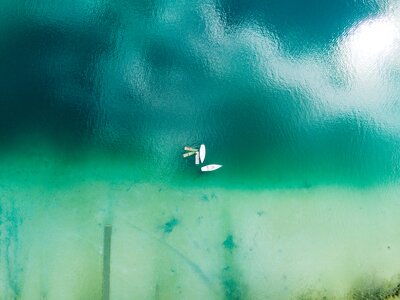
Face to Face with the Ancient Sea
In the nature park at Lake Weißensee, you’re face to face with the ancient sea. Follow the traces of fossils that are millions of years old and tell a story of prehistoric living beings. Nature park ranger Robert Röbl goes into raptures about his “swimming dinosaurs” that were found here. One of them is 78 cm in size and as old as 235 million years. That’s quite unique! “A tropical sea has once covered this area. That’s why it’s very rich in fossils”, Röbl tells us. He knows the place like the back of his hand. On his guided tours, guests regularly find ammonites and fossilised shells. “They’re more than proud to take home such a unique souvenir”, Röbl says happily. He usually starts his tours from the mountain cabin “Fischeralm” near Lake Weißensee. Later on, he shows his thrilled guests how to cut and polish the fossils and stones.
Last but not least, the magical Swarovski Crystal Worlds in Wattens attract thousands of guests every year. “It’s a great place but unfortunately, you won’t see real gemstones there. It’s precision-cut glass”, Kranzelbinder explains a major difference in the world of crystals.
Gems for Body, Mind & Soul
Myths about gems are omnipresent. “More and more people believe in the positive effects of gemstones. Lately, there has been a large demand for them associated with health benefits and lifestyle”, Kranzelbinder knows. Gua sha stones and quartz rollers are used for massages. Crystal-infused water is a trend. Gemstones are a popular decoration in apartments because they’re said to increase harmony. So, it’s really worth immersing yourself in the legendary world of gems and minerals during your holiday in the Austrian mountains. You might even find them in front of the mountain cabin you’re staying in.
Elisabeth Tschernitz-Berger
www.gedankenschmiede.at, 5 Article(s)
